| Coach | NA |
| Venue | Stadion Miejski |
Odra Opole Trivia
Odra Opole predictions
Predictions for Odra Opole: See upcoming and historic predictions for Odra Opole below.
Disclaimer: Past performance does not guarantee future results. Betting involves risk; only wager what you can afford to lose. Always gamble responsibly.
Odra Opole Opinions
 Who is the greatest player in the history of Odra Opole?
Who is the greatest player in the history of Odra Opole?
Odra Opole latest results
| 13/04 | - | ||
| 06/04 | - | ||
| 02/04 | 2 - 1 | ||
| 02/03 | 1 - 2 | ||
| 16/02 | 2 - 0 |
I Liga standings
| Rank | Team | MP | W | D | L | GF | GA | GD | Pts |
|---|---|---|---|---|---|---|---|---|---|
| 1 |
 Arka Gdynia
Arka Gdynia
|
26 | 15 | 6 | 5 | 43 | 25 | 18 | 51 |
| 2 |
 Lechia Gdansk
Lechia Gdansk
|
25 | 15 | 5 | 5 | 43 | 20 | 23 | 50 |
| 3 |
 Motor Lublin
Motor Lublin
|
26 | 13 | 5 | 8 | 36 | 31 | 5 | 44 |
| 4 |
 GKS Katowice
GKS Katowice
|
25 | 12 | 6 | 7 | 45 | 25 | 20 | 42 |
| 5 |
 Górnik Łęczna
Górnik Łęczna
|
26 | 10 | 12 | 4 | 29 | 24 | 5 | 42 |
| 6 |
 Tychy 71
Tychy 71
|
26 | 13 | 3 | 10 | 32 | 29 | 3 | 42 |
| 7 |
 Wisla Krakow
Wisla Krakow
|
26 | 11 | 8 | 7 | 48 | 32 | 16 | 41 |
| 8 |
 Wisla Plock
Wisla Plock
|
26 | 11 | 8 | 7 | 38 | 35 | 3 | 41 |
| 9 |
 Miedz Legnica
Miedz Legnica
|
26 | 9 | 10 | 7 | 35 | 28 | 7 | 37 |
| 10 |
 Odra Opole
Odra Opole
|
26 | 10 | 7 | 9 | 29 | 27 | 2 | 37 |
| 11 |
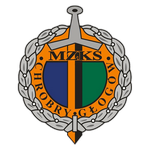 Chrobry Głogów
Chrobry Głogów
|
26 | 9 | 5 | 12 | 29 | 41 | -12 | 32 |
| 12 |
 Znicz Pruszków
Znicz Pruszków
|
25 | 9 | 4 | 12 | 20 | 28 | -8 | 31 |
| 13 |
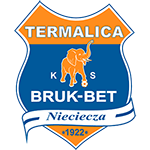 Nieciecza
Nieciecza
|
26 | 7 | 9 | 10 | 39 | 39 | 0 | 30 |
| 14 |
 Stal Rzeszów
Stal Rzeszów
|
25 | 8 | 5 | 12 | 34 | 43 | -9 | 29 |
| 15 |
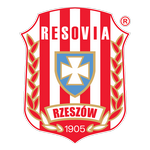 Resovia Rzeszów
Resovia Rzeszów
|
25 | 7 | 4 | 14 | 28 | 46 | -18 | 25 |
| 16 |
 Polonia Warszawa
Polonia Warszawa
|
25 | 5 | 8 | 12 | 29 | 37 | -8 | 23 |
| 17 |
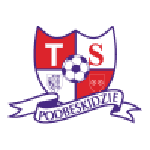 Podbeskidzie
Podbeskidzie
|
26 | 4 | 9 | 13 | 20 | 41 | -21 | 21 |
| 18 |
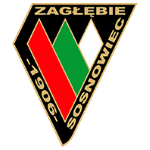 Zaglebie Sosnowiec
Zaglebie Sosnowiec
|
26 | 2 | 8 | 16 | 16 | 42 | -26 | 14 |
About Odra Opole
Odra Opole is a renowned football club based in Opole, Poland. Founded in 1945, the club has a rich history that spans over seven decades. Odra Opole is a significant part of the Polish football landscape, having competed in various leagues and tournaments throughout its existence.
The club's journey began in the lower leagues, but they quickly climbed the ranks due to their impressive performances and dedicated players. Odra Opole's first significant achievement came in 1952 when they were promoted to the Polish Third Division. This marked the beginning of a period of growth and development for the club.
In the 1960s, Odra Opole made their mark in the Polish football scene by reaching the Polish Cup final twice, although they were runners-up on both occasions. However, these achievements were a testament to the club's potential and set the stage for future successes.
Odra Opole's golden era came in the late 1980s when they competed in the Polish top-tier league, Ekstraklasa. During this period, they produced several notable players who went on to represent the Polish national team. Despite facing relegation in the early 1990s, the club continued to be a breeding ground for talented players.
The club faced financial difficulties in the early 2000s, which led to a period of instability. However, they managed to overcome these challenges and made a triumphant return to the Polish Second Division in 2013. This marked a new era of resurgence for Odra Opole, and they have since been a consistent presence in the second tier of Polish football.
Odra Opole's home ground is the Opole City Stadium, a venue with a capacity of over 11,000 spectators. The stadium is known for its vibrant atmosphere during matches, with the club's passionate fans known as the "Blue and White Brigade" providing unwavering support.
Throughout its history, Odra Opole has been known for its commitment to youth development. The club's academy has produced several players who have gone on to have successful careers both domestically and internationally. This focus on nurturing young talent is a cornerstone of the club's philosophy and continues to be a key part of their strategy.
Despite the ups and downs, Odra Opole remains a beloved institution in Polish football. The club's resilience, dedication to youth development, and passionate fan base are testament to its enduring legacy. As they continue to compete and develop, Odra Opole's story is far from over. The club's history is a testament to the spirit of football in Poland, and they continue to inspire future generations of players and fans.















